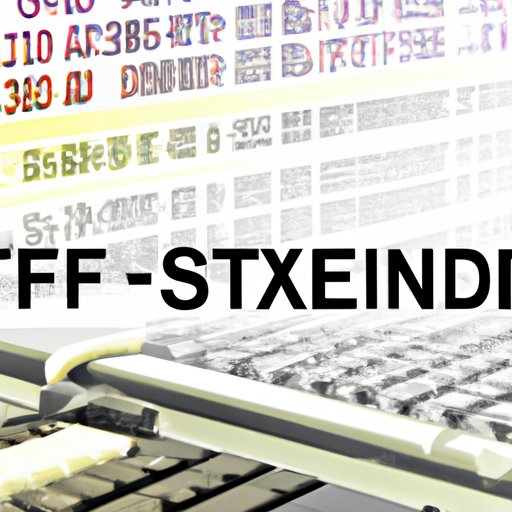Introduction
Exchange-traded funds (ETFs) are a type of investment that has become increasingly popular in recent years. They offer investors the potential for attractive returns while providing greater diversification and lower costs than many other types of investments. In this article, we will discuss what ETFs are, their benefits, how they fit into an investment portfolio, and compare them to other investment options.

Definition and Overview of ETFs
An ETF is an investment fund that is traded on a stock exchange, just like stocks. ETFs hold assets such as stocks, bonds, and commodities, and they are designed to track an index or a basket of assets. ETFs provide investors with the ability to invest in a large number of different assets without having to purchase each one individually. This makes it easier and less expensive to build a diversified portfolio.

Benefits of Investing in ETFs
ETFs offer several advantages to investors. First, they are highly liquid, meaning that they can be bought and sold quickly and easily. They also have low management fees, which means that more of the investor’s money goes toward investments rather than fees. Additionally, ETFs provide investors with the opportunity to diversify their portfolios, as they can invest in a wide variety of different asset classes. Finally, ETFs are tax efficient, as they generally have lower capital gains taxes than other investments.
Types of ETFs
There are several different types of ETFs available to investors. Equity ETFs are composed of stocks from various companies and are designed to track a particular market index. Bond ETFs are composed of bonds from various issuers and are designed to track a particular bond index. Commodity ETFs are composed of commodities such as gold and oil and are designed to track a particular commodity index. Currency ETFs are composed of currencies from various countries and are designed to track a particular currency index. Finally, leveraged ETFs are designed to provide investors with a higher return, but they come with additional risks.
Risks Involved with ETFs
As with any type of investment, there are risks involved with ETFs. Market risk is the risk that the value of the ETF will decline due to changes in the underlying securities. Liquidity risk is the risk that the ETF may not be able to be sold quickly enough at a price close to its current value. Credit risk is the risk that the issuer of the ETF may default on its obligations. Interest rate risk is the risk that rising interest rates will reduce the value of the ETF.
How ETFs Fit into an Investment Portfolio
ETFs can be an important component of an investment portfolio. Diversification is an important part of successful investing, and ETFs allow investors to easily diversify across a variety of asset classes. Additionally, ETFs typically have lower fees than mutual funds, which means that more of the investor’s money is going towards investments rather than fees. Finally, ETFs provide greater flexibility to investors, as they can be bought and sold quickly and easily.
Steps to Investing in ETFs
Investing in ETFs is relatively straightforward. The first step is to research potential ETFs. There are hundreds of different ETFs available, so it’s important to find those that match the investor’s goals and risk tolerance. Once an ETF has been chosen, the investor needs to open a brokerage account in order to buy and sell ETFs. Finally, the investor can purchase shares of the ETF through their broker.

Comparing ETFs to Other Investment Options
When considering an investment, it’s important to compare it to other available options. Mutual funds are another type of investment fund that can provide investors with diversification. However, mutual funds typically have higher fees than ETFs and may be less tax efficient. Stocks and bonds are both individual investments that may provide higher returns than ETFs, but they also come with additional risks. Ultimately, the decision of which type of investment to choose depends on the investor’s goals and risk tolerance.
Conclusion
ETFs are a popular and versatile type of investment that can provide investors with diversification, lower costs, and greater flexibility. They are relatively easy to invest in, but it’s important to do research and understand the risks involved. Ultimately, ETFs can be an important component of a diversified investment portfolio.
(Note: Is this article not meeting your expectations? Do you have knowledge or insights to share? Unlock new opportunities and expand your reach by joining our authors team. Click Registration to join us and share your expertise with our readers.)
